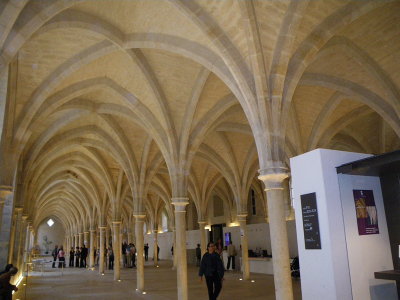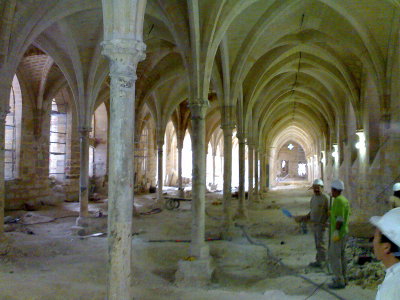| Intranet | Français | English | Español | عربي |

Le Collège des Bernardins, located at 20, rue de Poissy in the 5th arrondissement of Paris, is a former Cistercian college of the historic University of Paris. After a complete renovation completed in 2008, it serves as a training site for the Diocese of Paris from whom it was acquired in 2001, as well as place for arts events and conferences.
In the early thirteenth century the abbot of Clairvaux decided to found a Parisian college to train the cistercian religious order, also known by the name bernardin.
The dwelling in which the monks had initially chosen to live was too small and it became necessary to construct a new building. It would be Étienne de Lexington, another abbot of Clairvaux, who led this project by purchasing land previously regarded as unsuitable, being regularly inundated by floods from the river Bièvre.
The main body of the college was completed by 1253. It comprises several buildings on four levels with classrooms, dormitories and canteens.
To ensure that the building did not sink under its own weight in this marshy area, the cistercians/bernardins supported its foundations on piles of oak.

The site has undergone a complete renovation which commenced in 2004. It was completed in August 2008.
The renovation was conducted by Hervé Baptiste, chief architect of historic monuments to the original secions and Jean-Michel Wilmotte for the contemporary spaces.
This renovation necessitated driving 350 steel piles 20 meters deep in all exterior walls and under each of the original pillars.
Materials from Plâtre.com were utilized in 2 very different phases of renovation.
The initial phase took place during the raising of the building. Particularly in the lower sections it appeared that the walls were quite severely deteriorated and that many ruptures had developed in the retaining wall.
As is common for buildings of the Ile de France region, these were masonry walls rendered in plaster. It was therefore decided to carry out an injection of plaster slurry for immediate stabilization.
Besides full compatibility with the existing masonry, this type of mortar had the advantage of a lack of shrinkage upon set, making it ideal for filling gaps.Besides full compatibility with the existing masonry, this type of mortar had the advantage of a lack of shrinkage upon set, making it ideal for filling gaps. Moreover, the speed of the plaster set was controllable which allowed for site work to be carried out quickly. On site bore samples were used to verify the effectiveness of the mortar.
The second phase took place in the last stages of the renovation. The exterior was rendered in Stuc Pierre. Colour and texture were matched against existing stone elements.
Technical data sheet : Stuc Pierre